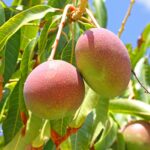Ecuador: Wana Bana turns heads at Fruit Logistica

It's often the case at fresh produce events that certain stands attract a lot of traffic, not because they are particularly well-known but rather their rare products are so unknown. 
People who have visited Latin America might be familiar with the guanabana, a large green fruit with a soft green skin, scales akin to a pineapple, and a creamy flesh inside.
“The guanabana comes from the same family as cherimoya (custard apple) – it’s a cousin, you could say, but from another climate,” says Santiago Peña of Ecuador-based Selva Fertil, which is marketing the fruit as Wana Bana in Europe.
“It’s bigger and comes from the Ecuadorian coast – it’s a bit creamier while the cherimoya is a bit drier. This is juicier but the benefits are similar.”
As such a large fruit, and with many pips just like a cherimoya, the guanabana may be daunting for some consumers but Peña believes it has the potential to catch on.
“This is a very noble fruit, very smooth and it’s very good for your health. It’s easy to manage once it’s mature – you can peel it and eat it like any other fruit, taking the pips out,” he says.
“As it’s a large fruit you’ll probably have some left, and you can put it in the fridge where it’ll last for eight days. And what you don’t eat as fruit you can use to make juice. It also serves a lot for desserts – you can find recipes on the internet."
He says the oldest plants in Selva Fertil's orchards are 10 years old, but in general growth has been fairly new.
"We started planting guanabana in the northern zone of Ecuador in Esmeraldas. The guanabana plant takes five years to grow, and currently we have one of the largest plantations in Ecuador," he said.
"We’d have 100 hectares, and we have our first hectares in production and can go out to the market. We can guarantee very good fruit quality with the quality from the plantation.
"We only use green products that are environmentally friendly – we don’t use anything that’s strong. We are in a process of going organic, but it's hard to use a process that's 100% organic he said.
"We are sending continuously to Europe every week mainly in France and Spain, and expanding to other countries."









































